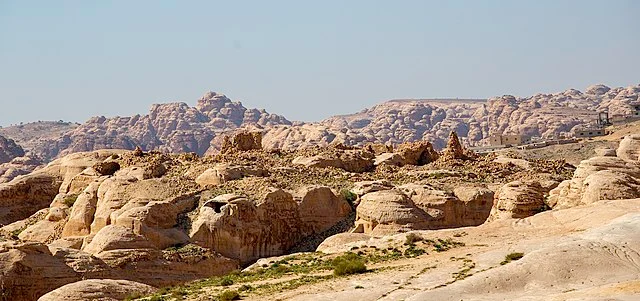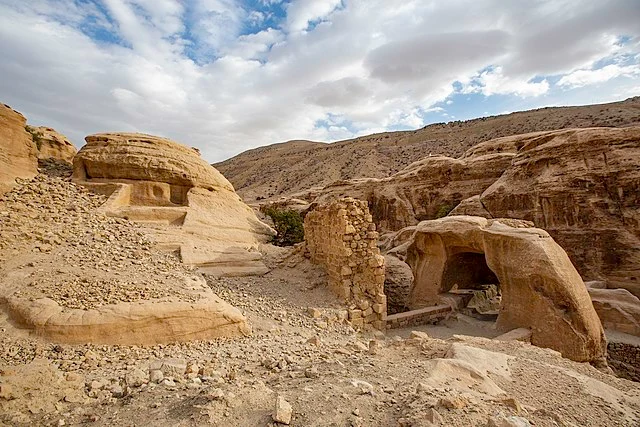Wu’ayra Castle, located in the Petra region of modern-day Jordan, is an important archaeological and historical site. This article explores the castle’s historical background, architectural features, and significance during the Crusader period.
Get your dose of History via Email
Historical Background of Wu’ayra Castle

Wu’ayra Castle, also known as Li Vaux Moise by the Crusaders, was constructed in the late 12th century AD. The castle was built during the Crusader period, specifically between 1116 AD and 1188 AD. Its construction coincided with the efforts of the Crusader Kingdom of Jerusalem to extend its influence over the region.
The castle’s primary purpose was to secure the strategic trade routes that passed through the area. Wu’ayra served as a military outpost, protecting the southern approaches to the Crusader-held city of Petra. The castle’s location, perched on a rocky outcrop, provided a natural defense against potential invaders. This strategic placement was crucial for maintaining control over the trade routes and ensuring the security of the Crusader territories.
Architectural Features of Wu’ayra Castle
Wu’ayra Castle exhibits typical Crusader military architecture, designed to withstand prolonged sieges. The castle’s construction incorporates both local building materials and European military techniques. The fortifications are characterized by thick stone walls, narrow gateways, and defensive towers. These elements reflect the Crusader’s adaptation to the local environment while incorporating their own military traditions.
The castle’s layout is irregular, adapted to the rugged terrain. The main fortifications include a central keep, surrounded by a series of walls and towers. The keep served as the last line of defense and housed the garrison. The outer walls, reinforced with towers, provided additional layers of protection.
Water management was another key feature of Wu’ayra Castle. The arid environment of the Petra region made water a valuable resource. The Crusaders constructed cisterns and channels within the castle to collect and store rainwater. This system ensured a reliable water supply during sieges, which could last for months.
Significance of Wu’ayra Castle in the Crusader Period
Wu’ayra Castle played a vital role in the Crusader Kingdom of Jerusalem’s strategy in the region. Its location allowed the Crusaders to monitor and control the movement of goods and people along the trade routes. The castle also served as a base for launching raids and military operations against neighboring territories.
Despite its strategic importance, Wu’ayra Castle was not invulnerable. The castle fell to Saladin, the Sultan of Egypt and Syria, in 1188 AD. Saladin’s capture of Wu’ayra was part of his broader campaign to dismantle the Crusader states in the Levant. The fall of Wu’ayra marked the decline of Crusader influence in the southern region of Jordan.
After its capture, Wu’ayra Castle gradually lost its military significance. The castle was abandoned, and its ruins were left to the elements. Today, Wu’ayra stands as a testament to the Crusader presence in the region and their efforts to fortify their territories.
Archaeological Findings at Wu’ayra Castle
Archaeological excavations at Wu’ayra Castle have provided valuable insights into Crusader military architecture and daily life. The site’s remote location and relative inaccessibility have preserved many of its features. Excavations have uncovered the remains of the fortifications, the keep, and the water management system.
Artifacts found at Wu’ayra include pottery, metal objects, and remnants of Crusader weaponry. These findings offer a glimpse into the lives of the castle’s inhabitants and their interactions with the surrounding environment. The study of these artifacts contributes to our understanding of the Crusader period in the Levant and the broader historical context of the time.
Conclusion
Wu’ayra Castle is a significant historical and archaeological site. Its construction during the Crusader period reflects the military strategies and architectural techniques of the time. The castle’s role in securing trade routes and its eventual fall to Saladin highlight the dynamic political and military landscape of the 12th century AD. Today, Wu’ayra Castle remains an important site for the study of Crusader history and the medieval period in the Near East.
Source:

